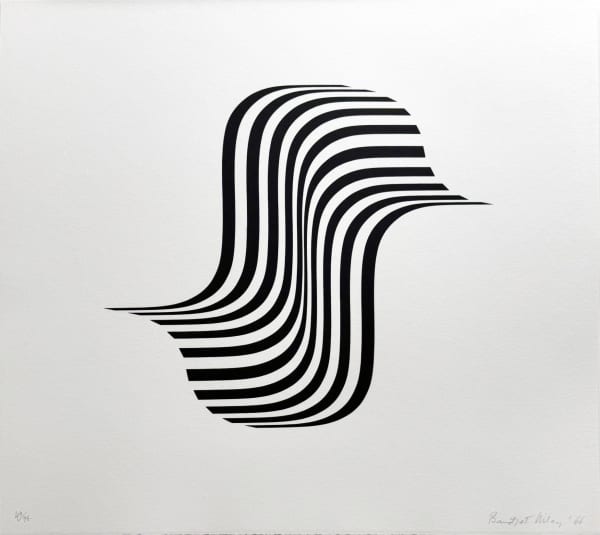Bridget Riley
Riley was born at Norwood, London, the daughter of a businessman. Her childhood was spent in Cornwall and Lincolnshire. She studied at Goldsmiths' College from 1949 to 1952, and at the Royal College of Art from 1952 to 1955. She began painting figure subjects in a semi-impressionist manner, then changed to pointillism around 1958, mainly producing landscapes.
In 1960 she evolved a style in which she explored the dynamic potentialities of optical phenomena. These so-called 'Op-art' pieces, such as Fall, 1963 (Tate Gallery), produce a disorienting physical effect on the eye.
Riley taught children for two years before joining the Loughborough School of Art, where she initiated a basic design course in 1959. She then taught at Hornsey School of Art, and from 1962 at Croydon School of Art. She worked for the J. Walter Thompson Group advertising agency from 1960, but gave up teaching and advertising agency work in 1963-4.
Riley was awarded the AICA Critics Prize in 1963 and also that year a John Moores, Liverpool Open Section prize. In 1964 she was awarded a Peter Stuyvesant Foundation Travel bursary to the USA. In 1968 she won an International Painting Prize at the Venice Biennale.






